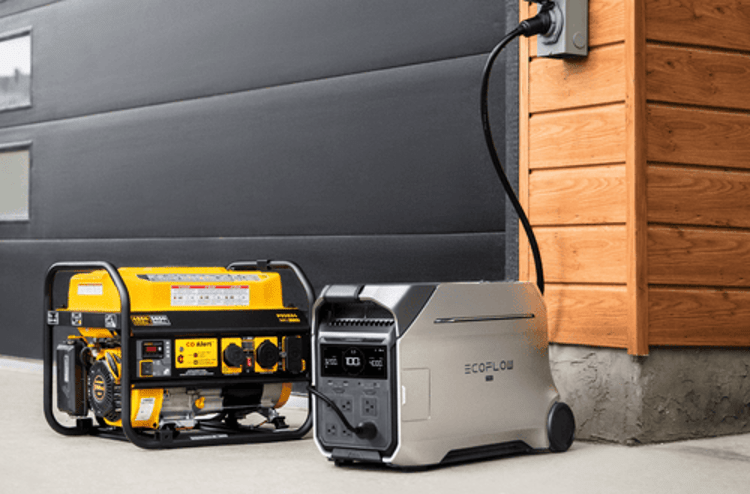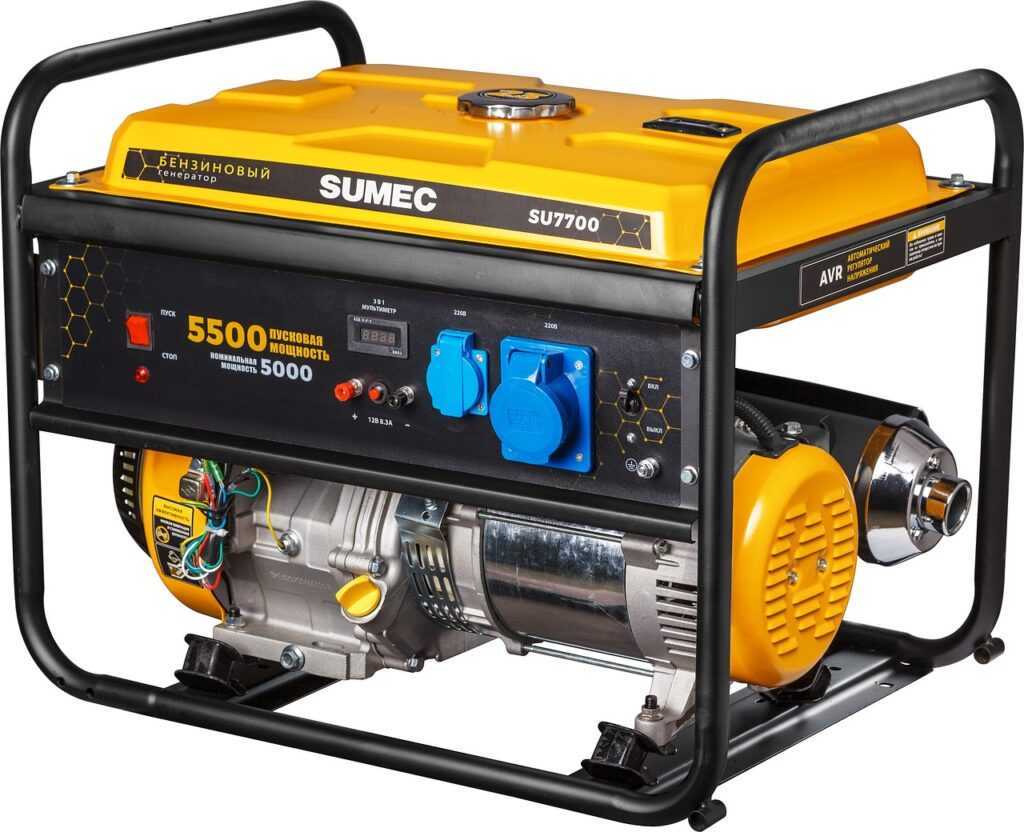As outdoor experiences diversify, reliable and safe power supply has become more and more important for camping enthusiasts. Generators of the past have always been a go-to power solution for outdoor activities, but using them inside RVs and enclosed camping spaces brings hazards with the fumes, especially carbon monoxide. Inverter generators have really changed the game in recent years providing portable, cleaner, more efficient and quieter power for indoor use. When you’re choosing a generator for camping, there are really three things you should be concerned about: the safety features to prevent toxic emissions, the generator’s portability around your camping site, and the fuel efficiency to power you through any storms, in case you’re RV camping or aren’t craving a return to the stone age. Whether you’re a weekend warrior with your RV or a longer-term camper looking for clean, dependable power for your devices, figuring out how to pick the best inverter generator can mean the difference between a comfortable trip and a really dangerous one. This article will serve as a guide to the key features and criteria to use when choosing a safe inverter generator for camping, for both rugged wilderness camping as well as family camping.
Understanding Inverter Generators for Indoor Camping Use
Inverter generators are an innovative type of generator, which are perfect for those who run on progressive technology and want high-quality power wherever they are. They produce AC power, convert it to DC and then invert it back into clean AC power all cubed by inverter module circuits so clean stable electricity is generated through digital inverter technology. Our inverter generators are more fuel efficient than conventional generators, automatically adjusting the engine speed to produce only the power you need.

The divergence between a traditional and an inverter generator for indoor camping would be significant. Conventional generators also emit inordinate levels of carbon monoxide and must be used very close to open ventilation, rendering them unsafe for indoor use by nature. Inverter generators also need to be sure buried yet still ventilated whether they are manufactured to have much lower airborne chemicals and for additional safety benefits designed to fit in amongst use. But, remember that even inverter generators should run in open air and should not be used in absolutely enclosed spaces without ventilation, no matter if it has the support of ventilation built in the system. The focus is striking the right balance between closeness and separation from inhabited space while offering enough protection from the weather.
Safety Features to Prioritize for Indoor Generator Use
Carbon Monoxide Detection and Prevention
New inverter generators also come with advanced carbon monoxide alarms that act as a safety net for indoor use. High-end CO detection sensors monitor emissions and shut down the generator if an unsafe concentration of CO accumulates. When shopping, opt for models with CO Guard or similar technology that is compliant with ANSI/UL 2201 standards concerning carbon monoxide safety. These systems ideally would respond quickly but also would turn off within seconds of the CO level’s return to normal. The most dependable models have two-sensor systems to give you double the protection in the event of a sensor failure.
Low-Noise Operation for Confined Spaces
When running a generator inside or close to living areas, encumbrance takes on a whole new level of importance, for comfort and safety. The top indoor-approved inverter generators also keep noise levels below 60 decibels at rated load – that’s like the sound volume of a normal conversation. Higher-end models feature multi-layer sound dampening technology such as noise reducing mufflers, anti-vibration motor mounts and sound reducing enclosures that help to reduce sound reflection to the outside. When using the cooler at night or in a site with quiet hours, a silent pump will not disturb you. Seek generators that have rubber feet or vibration-damping mounts so that mechanical noise won’t be transferred to the RV floor or camping pad. This brings comfort and helps in minimizing structural stress on both the generator and camping trailer.
Key Features for Camping-Ready Inverter Generators
Portability and Space Efficiency
If you’re getting an inverter generator for camping, then portability becomes an important factor. The perfect range in weight is between 30-50 lbs so a single person can easily manage the setup and moving. Four newer-style camping generators feature ergonomic handles, built-in wheels, and telescoping carry bars to help you move the generator to wherever you need it easily. Space is equally important, coming in at just the right size to fit in an RV storage compartment or trunk of a vehicle while not taking up a ton of space when you are camping. Consider a unit that can stack, or a modular model that can be disassembled into smaller parts for carrying.
Battery Storage and Fuel Efficiency
Next generation inverter generators do well at fuel efficiency with smart load management to modify power generation depending on the requirement. The most efficient ones can run 8-12 hours on a single tank at 25% load so that it can be run throughout the night. Premium solutions such as the EcoFlow DELTA Pro highlight how contemporary home power systems can be combined with the versatility of portable solar panels to develop hybrid power systems that can extend runtime and reduce dependence on gasoline. Smart BMS prevents overcharging and deep discharging. Parallel capability enables the combination of two or more batteries for those larger jobs when power is needed. These factors together provide an adequate energy source, catering its use in variable camping environments, reducing fuel consumption and subsequent pollution output physically.
Top Inverter Generator Models for Indoor Camping (2023)
Alternative Options Comparison
There are a few other fuel-efficient options that carry some interesting characteristics for use indoors when you are camping. An “eco-throttle” control tames the engine output to match demand, squeezing fuel consumption down as low as 0.4 gallons per hour. For all those campers on a budget, entry-level inverter generators offer basic safety elements with a simplified operating system and less power output, ultimately cutting down price. Three alternatives to these choices tend to be paralleling options, for the ability to add link power as demanded. And when looking at choices, prioritize models with CO detection systems, noise reduction, and CARB compliance for the most indoor use possible.
Step-by-Step Selection Process for Campers
Choosing the Best Inverter Generator for Indoor Camping Finding the best inverter generator for an indoor camping trip should be a methodical process, one that ensures safety as well as performance. First, work out your overall power needs, such as critical gear (CPAP machines, lighting and electronics). Factor in an additional 20% for startup spikes and future needs. Then, check safety certifications meticulously – we’re talking about ANSI/UL 2201, CSA certification, and CARB compliant – all of which lets you know that it has undergone the levels of safety testing required to be used indoors. For levels of noise, pick models which are rated to produce less than 60 decibels at 25% load, and do the testing to the sound of the device at different distances. Weight is a vital consideration too – choose models that weigh less than 50 pounds if you plan to move your generator around frequently, and make sure it will fit the space you’ve selected for storage. And consider fuel carefully – weigh the fact that, while propane burns cleaner than gasoline, gasoline is much easier to get your hands on. Last but not least, check the ventilation options where you want to install, and make sure that you have sufficient airflow to meet guidelines from the manufacturers. Long-term options are to create more ventilation in partially enclosed areas to continue working in safe environments. This method also serves as a way to eliminate choices and end up with generators which are the best fit for your individual camping layout, and with safety features.
Essential Safety and Performance Considerations
When choosing an indoor inverter generator for outdoor camping, we also need to take into account several very important factors to ensure excellent safety and efficiency. The trailblazers of safe indoor generator operation are carbon monoxide detecting mechanisms and ventilation, while fuel economy and portability are the actual practical value of your investment. For weekend campers, smaller models with simple safety features and a moderate electrical output make a great starting point. If you’re a full-time RVer, you may want to invest in more heavy-duty units that have expandable capacity and offer the option for dual fuel. No matter your outdoor camping style, don’t skimp on critical safety certifications and always adhere to manufacturer recommendations for placement and ventilation. When these safety features are valued at the same level you’d expect of any other appliance or tool, along with other musts like noise suppression and fuel efficiency, you get a peace-of-mind upgrade to otherwise reliable power. And don’t forget that all inverter generators, no matter how sophisticated, still rely on normal usage and maintenance to retain their safety and long-term performance.

